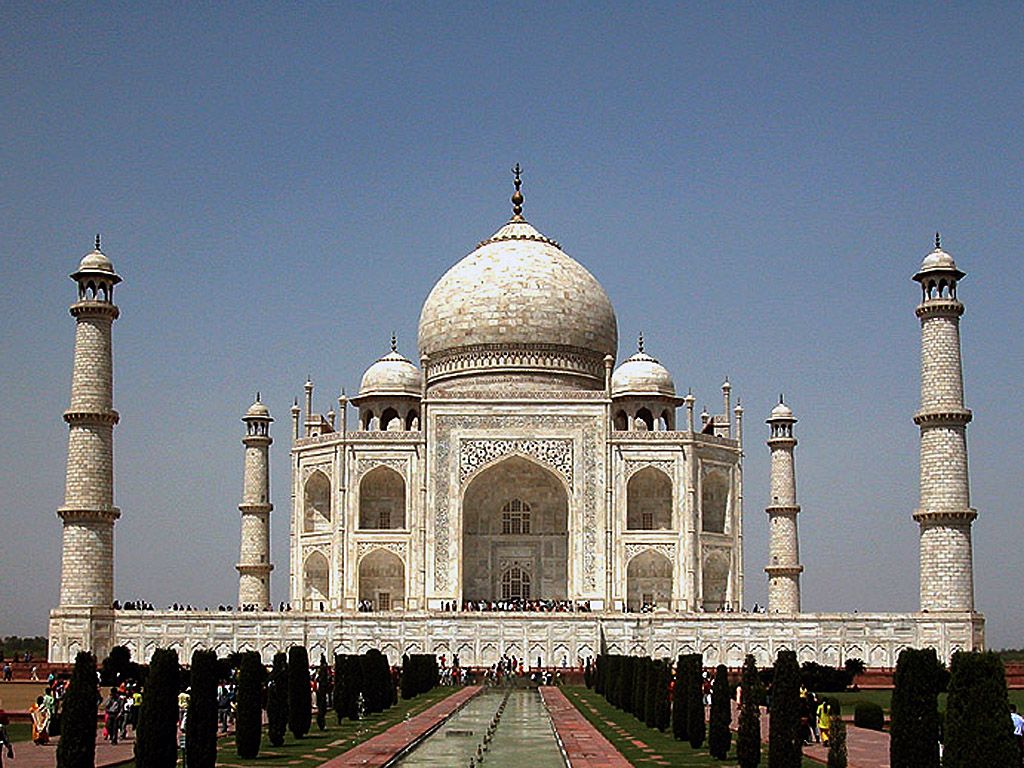India's Fascinating Diversity
In the plane from Bangkok to Chennai we met a travelled American with roots in India, who told us about his relations to the country. It was the only place in the world, where he always had problems with his stomach, and after a while he was tired of the barriers that still exist because of the class and caste system.
In the airport we met a young Indian, who had studied abroad. He said, that if you learn how to handle the Indian trains and the Indian bureaucrats you may have a good journey. He also wondered why a nation that built the Taj Mahal had so many ugly modern buildings.
Thus prepared we plunged into the overwhelming crowds of Chennai.
In a couple of days we saw Hindu temples, Christian churches and Muslim mosques. We visited the city's museum with its splendid religious art. We saw red and white English colonial houses in a picturesque dilapidated state. We walked past attractive houses behind high walls as well as slum dwellings along stinking rivers. We saw traces of the tsunami on the coast. We met women in beautiful saris and men in ironed shirts with a cotton cloth around their waists. We gave coins to begging lepers with swollen elephant's legs. We passed people, who had the same greyish colour as the pavement, on which they lived. We had black feet in our sandals and a nasty cough caused by the pollution. We were chased by taxi-drivers in need of customers. We were on a guided tour of the city, but the loudspeakers were so bad, that nobody understood a word. We visited an Internet cafe with a good and fast connection. We had tasty southern Indian meals.
In short we met India's fascinating diversity.
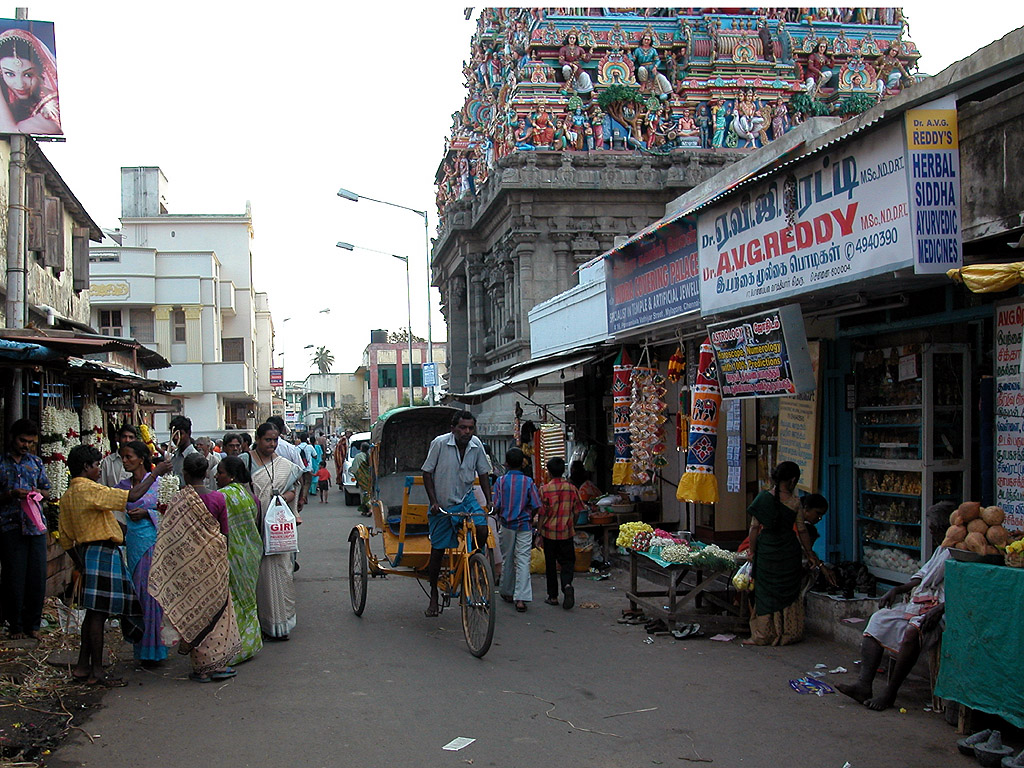
Our journey
From Chennai we took a train to Thiruvananthapuram to visit Mitraniketan, which is a school for people from the tribal community and scheduled castes. Here we met many happy students and idealistic teachers creating integrated development and education with villagers. Our conversations with the founding director Sri K. Viswanathan, which is a separate article on our website, helped us understand the global perspectives of Mitraniketan's educational strategy based on dialogue. It is inspired by among others the Indians Mahatma Gandhi, Rabindranath Tagore and the Dane N.F.S. Grundtvig. Mitraniketan is a member of the international friendship organisation Servas that connects local hosts and travellers. One of the employees who grew up near Mitraniketan told us about his life.
In Mitraniketan we met a former colleague and friend from a Danish folk high school with whom we travelled for a couple of weeks. She has studied comparative religion and contributed to our understanding of India's religious diversity.
Together with her, we went on to Allapuzha, which was our starting point for a tour of the Backwaters of Kerala. We spent 24 hours punting in a modern version of a traditional rice barge. This gave impressions of locals fishing, cooking and washing at the banks, and the beautiful scenery was relaxing.
In the pleasant coastal town Kochi Jewish, Portuguese, Dutch and British immigrants have added cultural tones to the unmistakable Indian ground colour. We visited churches, mosques and a synagogue. We took part in a temple festival, priests and elephants walked in procession and blessed people in their homes. In Mantacherry Palace we saw sensuous murals with scenes from the great Indian epics Ramayana and Mahabarata. We also experienced at snake charmer performing for tourists.
Our next stop was Madurai, where we visited the impressive Sri Meenakshi Temple and the Gandhi Memorial Museum, which tells about India's struggle for freedom and about the peace and freedom fighter Mahatma Gandhi's thoughts and work.
From Chidambaram we went to Tranquebar, which through centuries was a base for Danish trade with India. Walking under the merciless sun and visiting the small museum in the Danesborg Fort it is not difficult to imagine, that it has taken an adventurous spirit as well as courage to leave Denmark and settle on this foreign coast in the beginning of the 1600s.
In Pondicherry you still sense French notes, restaurants serve good French courses, the policemen wear red caps and some streets are called "Rue". Here we felt the devout atmosphere among Indians and Westerners in Sri Aurobindo Ashram. We also visited Auroville, which is an idealistic project, where people from many countries gather to find unity in diversity on an spiritual foundation created by Aurobindo and his French soul mate called "the Mother".
In Mamallapuram we stayed in a resort with swimming pool, many servants and soft music during meals. In the beach the beggars were kept at a distance by discrete guards. We saw the impressive temples carved in the rocks during the reign of the Pallavas from the 5th to the 8th centuries. We also visited some of the many artisans, who continue this tradition.
Back in Chennai we followed shootings in a film studio, we think they were producing one of the Indian love movies with dance and song routines. We walked in the footsteps of St Thomas the Apostle. We also visited the museum for swami Vivekananda, who spread his message about the connection between all religions in the decades around the previous change of century.
After 28 hours on a train we arrived in Kolkata, which until the beginning of the 20th century was the capital of British India. Its history is told in an advanced multimedia museum in the town hall. Victoria Memorial is an imposing reminder of colonial times. In the Academy of Fine Arts we saw exhibitions of modern Indian art. Dakshineswar Kali Temple was the home of the priest Ramakrishna, who inspired swami Vivekananda. Belur Math Temple has architectural symbols from the religions of the world, and it is the international headquarters of the Ramakrishna Mission. A visit in Mother Teresa's Hospital for the Dying Destitute, where old people lay shoulder by shoulder nursed by loving nuns in a dormitory, was a moving and shocking experience.
In the sacred city Varanasi on the Ganges we joined the chaos of bathing pilgrims, meditating holy men, people practising yoga and tourists. We were fascinated by the Hindu cremations. After a bath in the river, the dead person is wrapped in a cloth and burned on a fire, before the ashes are strewn in the Ganges. From Varanasi we went on a tour to the Buddhist place of pilgrimage Sarnath, where Buddha held his first sermon after having reached enlightenment. Here Buddhists from many nations have their own temples.
From Varanasi we went directly to New Delhi, a modern metropolis with wide boulevards, cafes, shops selling international brands, a metro under construction and museums that are up-to-date. But also here traffic may stall, when a holy cow unconcerned crosses the street. We had interesting contacts with a Danish and an Indian woman working in the UN-system.
From Delhi we drove to Agra to visit the Taj Mahal, a loving dream in white marble. The building is situated in a beautiful Persian Garden, and the main architect is supposed to have come from Shiraz in Iran. This made it clear that the ends of our journey around the world had almost met.
We have travelled around 6000 kilometres in India by trains, busses, taxis and autorickshaws. The trains have been old but OK. Often hordes of beggars and merchants have passed through, and sometimes armed policemen have guarded them. Even "luxury-busses" usually look like something a blacksmith and an electrician have made out of available materials. But we admire the drivers, who with a brick under the foot and a hand on the horn drive slalom between holy cows, playing monkeys, pedestrians, cyclists and motorised vehicles in roads with "traffic like a video game", as a rickshaw-driver put it.
You have to pay attention when you shop. We have been offered Nescafé that was more than one year too old. We have had dry bread that no doubt had been in the sun several days. We have bought a guided tour of Kolkata with no guide because there were few customers. In touristy areas travel agents, taxi drivers and merchants always seem to start by asking several times the normal price.
We have stayed in modest hotels and comfortable often beautifully decorated guesthouses and come close to the daily lives of our hosts. From time to time, we have relaxed by indulging in luxury. In India you can buy peace and comfort for less than half the price of a room in a tattered Danish hotel. Measured by Western standards everything is cheap - even when you are taken in.
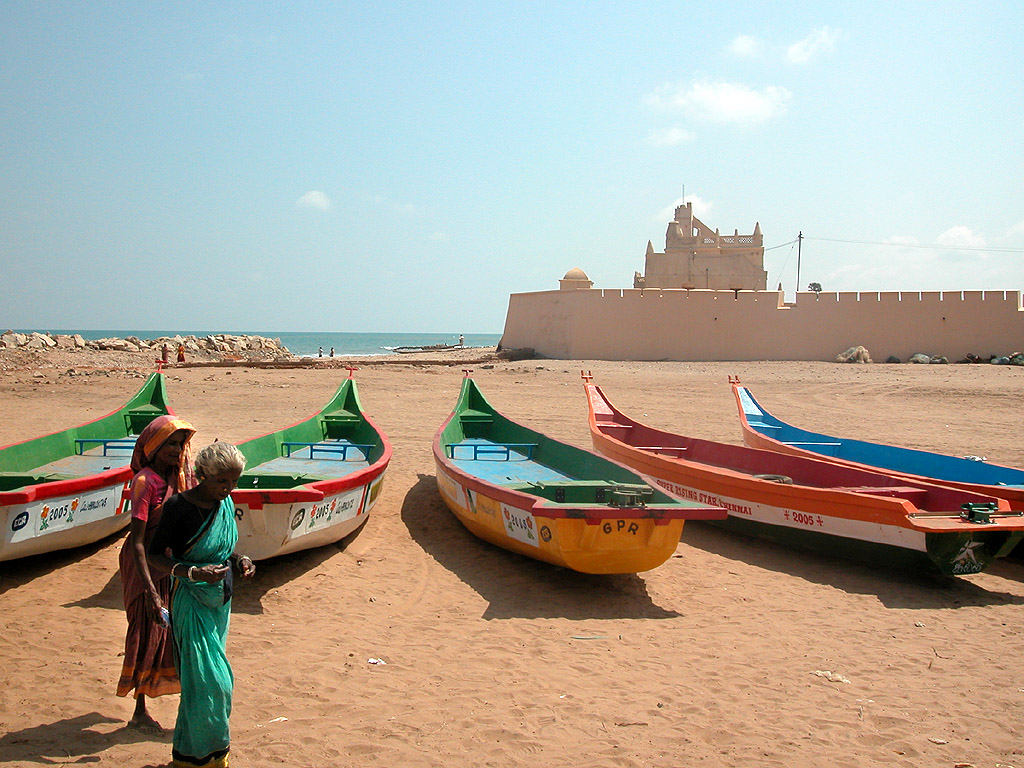
Rice on palm leaves
In India they grow pepper and many other spices, and this comes out in the Indian cuisine. Salt sprinklers have one small whole, while pepper sprinklers have many large ones.
One of the first days in Chennai competent waiters in a vegetarian restaurant introduced us to at typical Tamil Nadu meal. We had a large helping of rice served on a palm leaf and many small bowls of tasty vegetables and sauces. Fresh yoghurt puts out the fire after hot food. The Indians mix rice and vegetables with their right hand and eat using their fingers, while tourists get a knife and a fork. In southern India we had many similar meals several times a day.
In northern India bread rather than rice is the main substance of any meal. We have had delicious sometimes crispy and sometimes soft bread that was either deep-fried or baked in a conical tandoori oven made of clay with charcoal in the bottom. Tandoori fried fish, chicken and lam has a piquant grill flavour that is emphasised by often strong mixtures of spices. Indian fish are lean and meaty, because they live in hot water, and we have had many tasty dishes with fish.
We have had wonderfully fresh fruit juice. We have been drinking spiced tea with milk and coffee with a lot of milk, sugar and chicory. When tea is bought in the street, it is served in handmade clay cups that are disposed of after use. We have had beer served in a teapot and mugs; this drink was billed as "special tea".
Indian cuisine varies regionally and mirrors her cultural diversity.
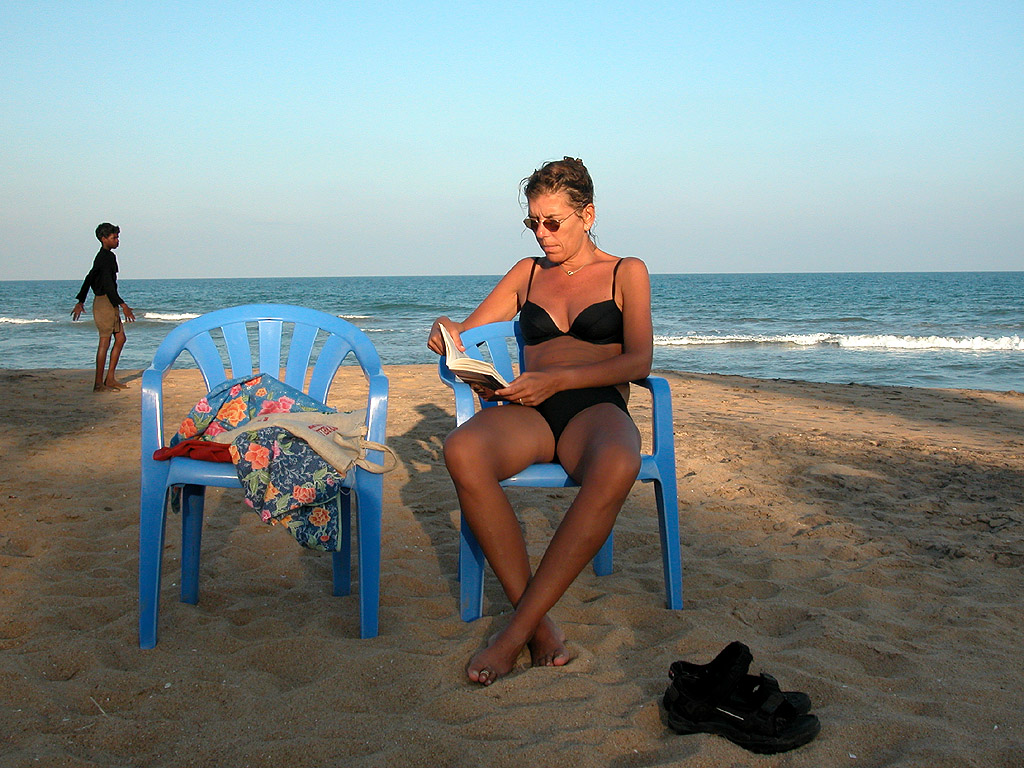
Beggars and victims of the tsunami
We focused way behind him, when he stepped through the door of our train carriage. None the less he approached us and offered something that may have been a lottery ticket. When we declined the offer, he put his crippled left hand right under our eyes and asked if we had seen his handicap. We said yes and repeated our refusal. He stayed for several minutes, before he walked away angrily. He was one of perhaps one hundred that morning, and we had no change.
In parts of the country with few tourists we have been contacted by many kind and hospitable Indians, who have willingly posed for photographs or invited us to their homes with no ulterior motives. But in touristy areas we have often found the expectation that need automatically should be met with cash. We have seen beggars in all the countries in which we have travelled, but in India there are lots of poor people and quite a few small-time crooks. In southern India the tsunami that hit the coastal areas on December 26th 2005 was one of the reasons why many people were in need.
One of the first persons we met in Tranquebar was a boy who with obvious grief told, that he had lost his whole family. He didn't beg but simply needed to tell us his sad story.
We have heard many often contradictory stories about the tsunami. About many people being killed. About fishing tackle, boats and homes being destroyed. About a church that was flooded during the service. About guesthouses and shops in need of customers, because tourists didn't come. About aid with no co-ordination. About officials who stole the aid. About people in need who got no help. About fishermen who refused to go fishing in order to get as much aid as possible. About getting a fortune by sending petitions to tourists. About a father who had broken his son's arm to make him a better beggar. About a village being saved by a call from Singapore. About a boy who wanted us to buy a new cricket-board because he had lost the old one. ...
Although the stories may not all be true, they tell truths about the consequences of the catastrophe. It is part of the story that a lot of clearing work had taken place, and that we saw many new boats, fishing nets and houses sponsored by aid. On our last night in India an underwater earthquake near Sumatra led to warnings of a new tsunami. It took some time to find a phone that could call internationally, so that we could warn friends in Thailand, but this time they had been warned.
We are children of the Danish welfare system and find it difficult to handle beggars. We have rarely rewarded begging with reference to the tsunami, instead we have ordered fish in restaurants, when this was possible. Some times we have disarmed unbelievable stories about the tsunami by telling that we experienced it in Thailand. We have not given money to children because we think it better for them to learn other ways than begging. We have given change to adult beggars, when we had some and found it reasonable or easier than refusing. Hanne has had warm feelings for handicapped people, and Lars has fallen in love with beautiful, young mothers carrying a child. - Alms may satisfy hunger but they don't solve problems in the long run, and our contribution to Indians in need has primarily been a donation to an educational project, that helps young people help themselves.
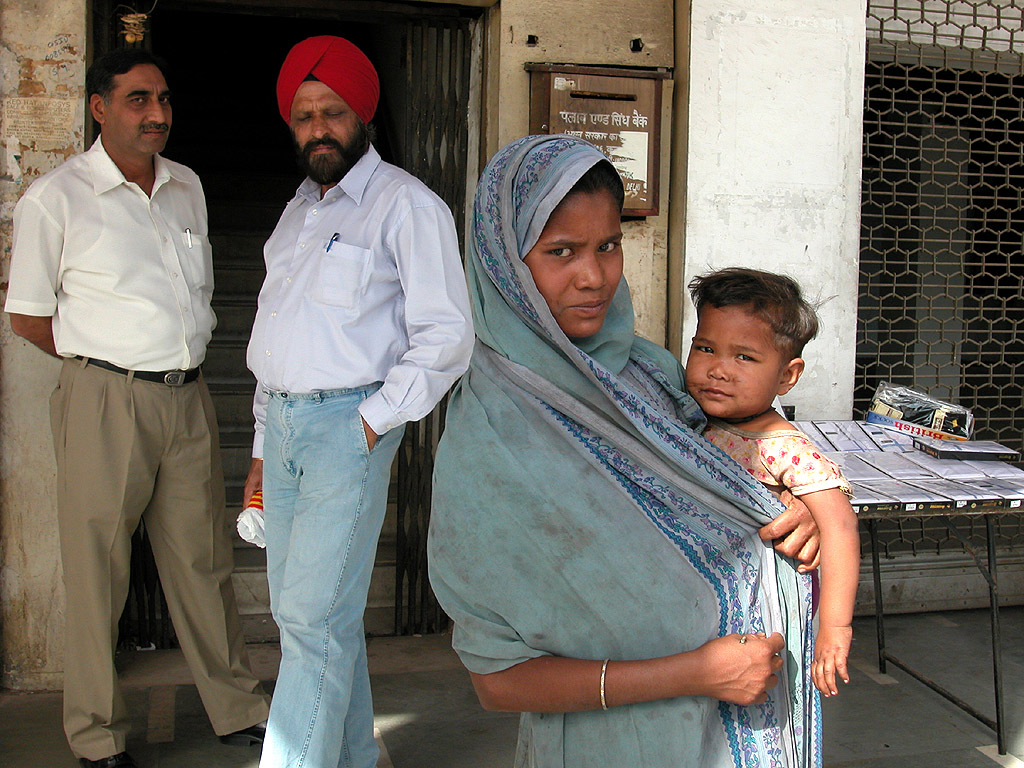
Accepting diversity
For centuries the Indian subcontinent has attracted conquerors, explorers, adventurers, colonisers, persecuted religious groups, missionaries and spiritual seekers - from the Aryans over Alexander the Great, St Thomas, Vasco da Gama and the European colonial masters to the hippies. The result is a great social, ethnic and religious diversity with many colourful contrasts.
After a conversation with a group of young people we concluded that sex, religion, caste, class, colour and whether you are vegetarian or not are still important distinctions in India. The answer was, "You got the point - and at the same time these differences do of course not mean anything."
We also understood that the distinctions among other places show, when people marry. For Hindus and Muslims it is still the norm that parents arrange the marriage as a contract between two families, and often more generations live underneath the same roof. We have talked with a Muslim whose parents were arranging his second marriage. In modern, educated circles "love marriages" are accepted, if the parents sanction the choice of partner. Visiting city parks and cafes we have seen that some young Indians make contacts to the opposite sex on their own. In the papers you find advertisements seeking a partner from a given caste as well as ads in which caste means nothing. We have heard that a poor member of a high caste may marry a rich member of a lower caste. We have also been told, that families with daughters may have difficulties paying the often large dowries.
In Kochi we spoke with an obviously happy, young couple living in an arranged marriage. Their parents had brought them together because a friend had told her sisters about him. There was a caste between them. One of the conditions of the marriage was a positive horoscope. When we asked if they would also arranged the marriage of their one-year-old son she answered without any regret, "Perhaps he will find a wife himself, that is the way the culture moves."
While travelling in India we have visited Hindu and Buddhist temples, Christian churches, Muslim mosques, a Jewish synagogue and an ashram; these places of worship have more often than not been busy. Especially meeting Hinduism has been a fascinating and exotic experience. We have seen holy cows, walking all over. We have been blessed by priests, who have given us a red spot in the forehead. We have been blessed by temple elephants touching our heads with the trunk, when they were given a coin. We have seen a priest bless a car to ensure stable and secure driving. We have experienced merchants blessing their goods with incense to make them sell well. We have taken part in many religious processions. We have been spectators at traditional temple dances. We have been present at the offering of goats in a Kali temple. We have met happy people sprayed with paint at the Holi Festival. And we have been present at cremations in Varanasi.
We have met the colourful rituals of Hindusim, and we have met its accept of people who believe differently. Many Hindus are able not only to tolerate other religions, but also to see them as expressions of equally worthy religious feelings. We have seen Christ side by side with Hindu gods in private homes. We have spoken with Indians, who go to church as well as to temple. We have met people, who proudly told that in their city many religious communities lived peacefully together and exchanged delicacies at festivals. We have read philosophical writings about all religions as different ways of searching a common religious truth. Some of them are so beautiful that they almost make us wish that we were religious.
In India religion and politics are interconnected. Modern democratic India won independence in 1947 at the expense of conflicts not only with the British colonial masters, but also between Hindus and Muslims. The result was the division between India and Pakistan, which was furthermore divided in a western and an eastern part; 25 years later East Pakistan became Bangladesh. In 1948 a fanatic Hindu's bullet killed the apostle of freedom Mathama Gandhi, who fought by non-violent means and was a spokesman for a united India with Muslims as well as Hindus. Subsequent political leaders have suffered a similar death. There have been recurrent conflicts between India and Pakistan among other things over Kashmir, but the parties now seem to come closer. While we travelled India and Pakistan played cricket, and shortly after our departure a bus route between the countries opened.
In the 90s the Hindu nationalist gained ground, but the election in 2004 brought a secular alliance led by the Congress Party to power.
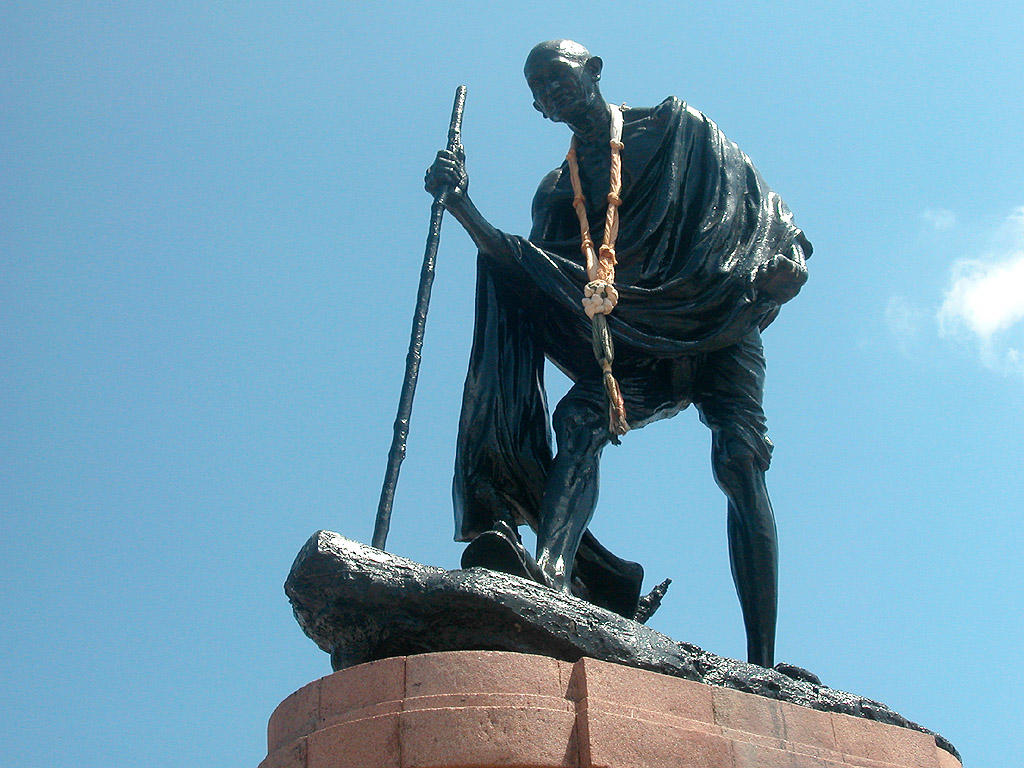
Ganesh with a Mac
In the US we met Americans who were irritated, because when they called their bank in the same city, they got to talk with a young Indian, who had been given an American name and an American accent, but worked in a call centre in India. Outsourcing of American jobs to among other countries India was also a theme in the campaign prior to the American presidential election in 2004.
In Kolkata we saw the exhibition "Compass 2005 - The East India IT Show", the purpose of which was to strengthen the image of West Bengal in the technological field. India is on its way into the 21st century, but its millennium old traditions are still alive. Employees in some private and public firms in India practise yoga to handle stress.
While travelling in India we met a Swedish teacher at a folk high school who had visited the country regularly during the last 19 years. When we asked him why, he answered, "I think it is because I have never really understood what is going on in this country."
Neither have we understood what is going on in India, but in Mamallapuram we bought a small nicely carved stone statuette of the god with the elephant head, Ganesh, who is among other things the god of writers. Instead of the broken tusk he normally uses for writing, he had a Macintosh laptop. Perhaps he is an image of modern India.
We have had problems with our stomachs, we have handled the bureaucrats as well as the trains, and we have had a good journey in India, so we are prepared to come back to visit places, we didn't make this time and to learn more about India's fascinating diversity.
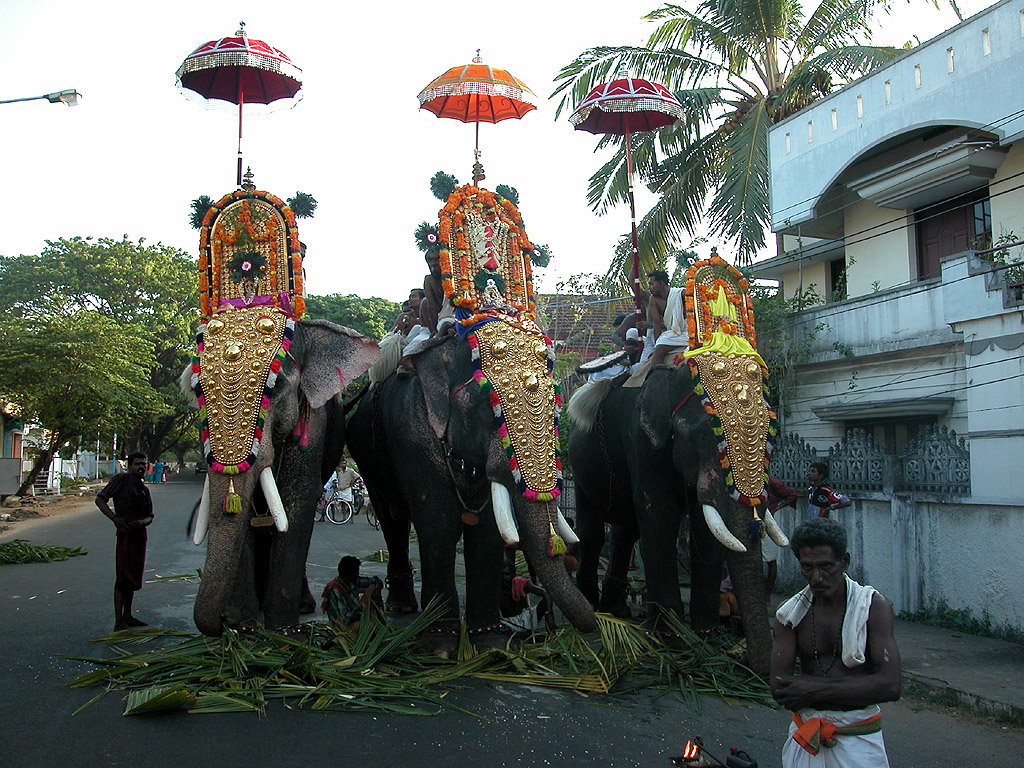
March 2005
